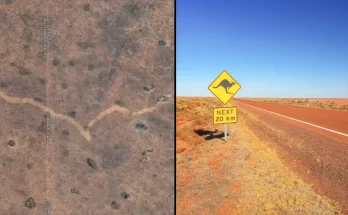People are just finding out the disturbing fate of those who had their bodies cryogenically frozen in the hope of being brought back to life
The thought of death is something many people are afraid of, so if there was a way to potentially live again in the future, it’s understandable some people would want to take it.
While being brought back from the dead years after your passing remains the domain of sci-fi movies, some people opted to be cryogenically frozen in real life in the hopes that they may be resurrected once technology catches up.
Cryonics, the freezing and preservation of human bodies in the hope of them being brought back to life in generations to come, first began in the late 1960s.
Procedures begin after the patient is clinically and legally pronounced dead, with cryoprotectants being used as early as minutes after the patient dies in order to try and protect against ice formation during cryopreservation to protect the organs and neural circuits.

The body is then cooled and placed into liquid nitrogen for storage, and according to Big Think, the patients are stored upside down with their head facing the floor in order to keep the brain at the coldest and most stable point.
While nobody has yet been successfully revived after being frozen, many people have chosen to take the chance that it may one day become possible in the distant future as science and technology evolve.
In the early stages, one of the largest operations specializing in cryonics was led by Robert Nelson, who was working out of a cemetery in Chatsworth, California.
He initially attempted to freeze patients on a bed of dry ice, but found it was not effective and moved on to using liquid nitrogen in the capsules instead.
Though he only had one capsule, he used it to store four patients, who were then lowered into an underground vault for storage.
However, one of the main issues with cryonics is the funding to store the bodies – and given that the patients are dead, eventually their payments are going to run out.

So, when Nelson stopped receiving money from the relatives of the patients involved, their bodies were ultimately thawed out.
And they’re not the only cryonics patients to have reached the same fate, as other facilities had faced issues with their equipment failing, leading to the bodies either not being preserved properly or thawing out and decomposing.
Of all the bodies that were frozen before 1973, only one remains preserved – that of Dr James Bedford, who was frozen in 1967 after dying at the age of 73.
Understandably, people were pretty horrified to discover the high rate of failure of the early cryonics patients, and shared their thoughts on Reddit.
One user wrote: “I didn’t notice my freezer had gone out until it started to get really smelly. I had to refreeze everything so I could get it into trash bags without throwing up. It had to have been multitudes worse when it was heads and bodies.”
Others added: “Early Adopter Tax is brutal,” and: “This just rings cosmic joke. Paying insane money to sign your life away and get tossed in a tube, believing one day you would awake in the future, and start a new life, only to have your body dumped because a company went out of business? Like f**k me that’s just sad.”
Another commented: “Imagine blowing all your savings on this, just to be treated like chicken breast with freezer burn…”
.jpg_dE5YOV?tr=w-1024,cr-0.0.1024.686&config=JTdCJTIybmFtZSUyMiUzQSUyMkdldHR5SW1hZ2VzLTcyOTkxMzEyJTIwKDIpLmpwZyUyMiUyQyUyMmFsdGVybmF0aXZlX3RleHQlMjIlM0ElMjJHZXR0eUltYWdlcy03Mjk5MTMxMiUyMCgyKS5qcGclMjIlMkMlMjJjYXB0aW9uJTIyJTNBJTIyVW5mb3J0dW5hdGVseSUyQyUyMG1hbnklMjBvZiUyMHRoZSUyMGZpcnN0JTIwYXR0ZW1wdHMlMjBhdCUyMGNyeW9uaWNzJTIwZmFpbGVkJTJDJTIwZWl0aGVyJTIwZHVlJTIwdG8lMjBlcXVpcG1lbnQlMjBpc3N1ZXMlMjBvciUyMGZ1bmRpbmclMjBydW5uaW5nJTIwb3V0LiUyMENyZWRpdCUzQSUyMERhcnJpbiUyMEtsaW1layUyRkdldHR5JTIwSW1hZ2VzJTIwJTIyJTJDJTIyY29vcmRpbmF0ZXMlMjIlM0ElN0IlMjJkZXNrdG9wJTIyJTNBJTdCJTIybGVmdCUyMiUzQTAlMkMlMjJ0b3AlMjIlM0EwJTJDJTIycmlnaHQlMjIlM0ExJTJDJTIyYm90dG9tJTIyJTNBMC42NyU3RCUyQyUyMnRhYmxldCUyMiUzQSU3QiUyMmxlZnQlMjIlM0FudWxsJTJDJTIydG9wJTIyJTNBbnVsbCUyQyUyMnJpZ2h0JTIyJTNBbnVsbCUyQyUyMmJvdHRvbSUyMiUzQW51bGwlN0QlMkMlMjJtb2JpbGUlMjIlM0ElN0IlMjJsZWZ0JTIyJTNBbnVsbCUyQyUyMnRvcCUyMiUzQW51bGwlMkMlMjJyaWdodCUyMiUzQW51bGwlMkMlMjJib3R0b20lMjIlM0FudWxsJTdEJTdEJTJDJTIyd2lkdGglMjIlM0EyMTIxJTJDJTIyaGVpZ2h0JTIyJTNBMTQxNCU3RA==)
Others took a more pragmatic approach, writing: “I mean, they went from dead to dead so it wasn’t like it mattered. And it was a waste of money on a ridiculous long-shot. But people play the lottery every day.
“It’s just humans being human. I’d love to live forever myself. Don’t see any promising tech coming online in my lifetime, though.”
Although cryonics is considered a pseudoscience with little chance of ever being successfully used to reanimate a dead body, people are still signing up to be frozen after their death.
In May, a man from Sydney became the first person in Australia to have his body cryogenically frozen, having spent $112,000 for the procedure in the hope of one day being brought back to life.


